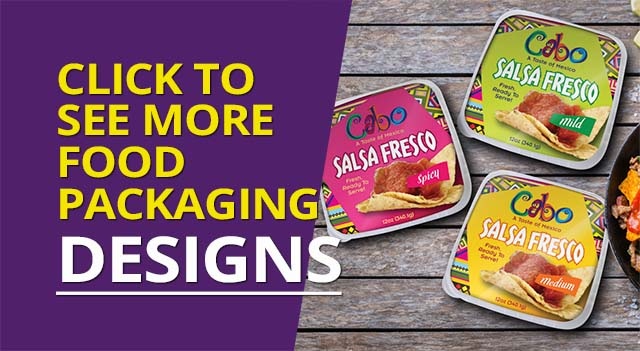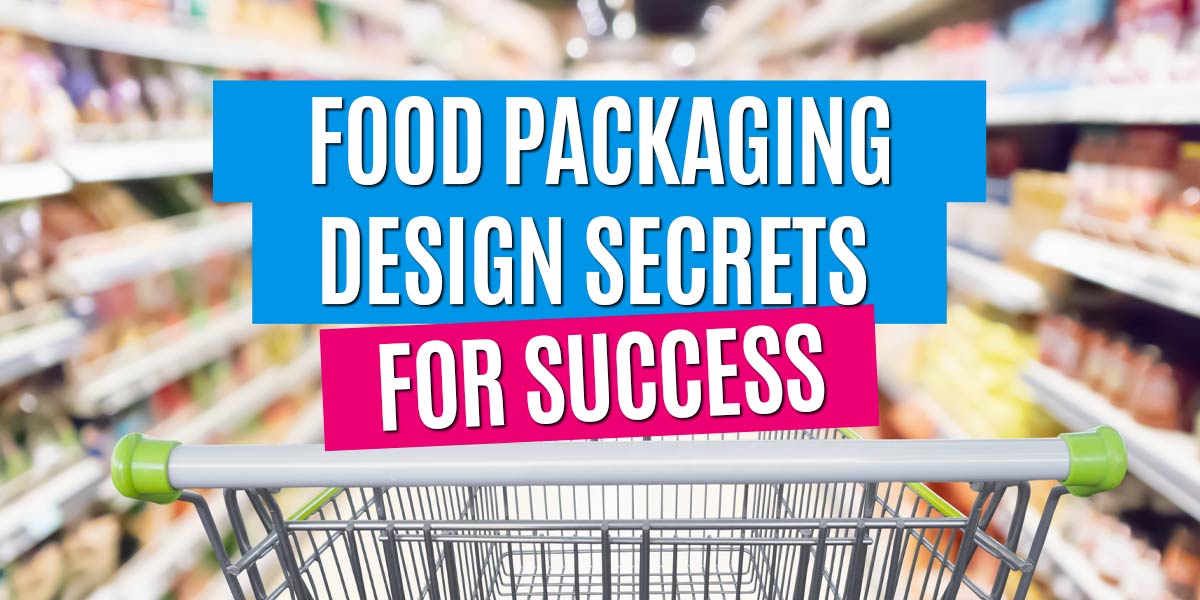
When walking down the aisle of any grocer, consumers are faced with an amalgam of food choices, food choices that make living so convenient today.
However, the hundreds and hundreds of products that are within sight undergo a rigorous process before appearing on the shelves.
Whether the product is a bag of chips or a frozen entree, all food is designed and packaged to not only appeal to consumer tastes and palette but to also conform to strict government regulations.
Protective Barriers
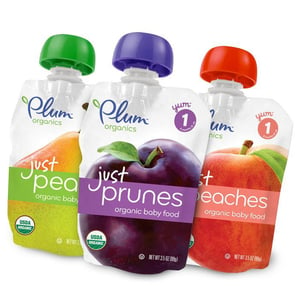 First and foremost, food packaging design’s purpose is to protect and preserve the contents of the package.
First and foremost, food packaging design’s purpose is to protect and preserve the contents of the package.
Chemical, physical and biological hazards are the three factors that go into determining appropriate packaging.
Materials used in protecting food against chemical hazards include metal, glass and closure devices (plastic caps, lids, and pop tops).
These barriers protect food from chemical changes as it relates to being exposed to oxygen, losing or gaining moisture, and exposure to light.
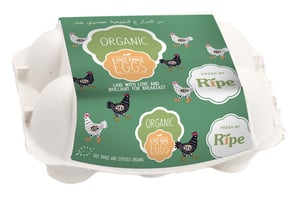 Biological considerations relate to packaging that will prevent food from spoiling, packaging that acts as a barrier to insects and other rodents, and packaging that prevents ripening or molding.
Biological considerations relate to packaging that will prevent food from spoiling, packaging that acts as a barrier to insects and other rodents, and packaging that prevents ripening or molding.
Finally, physical protections ensure food items are not crushed or broken, for example, eggs, and other fragile foods.
Food Supply Safety
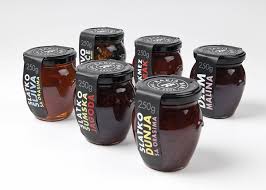 Much of the food that is processed and packaged has also to be made tamper-proof and has to be able to be traced back to its origin in case of contamination or other potentially hazardous public health issues.
Much of the food that is processed and packaged has also to be made tamper-proof and has to be able to be traced back to its origin in case of contamination or other potentially hazardous public health issues.
At the grocery store, products used to be easily accessible at the site of the grocery store by anyone, which made consumers vulnerable to isolated instances of food tampering.
As a result, food manufacturers have increased security measures to prevent malicious tampering of food while it sits on the shelf.
When food contamination does occur, manufacturers need to be able to trace the product’s path to the grocery store. For this reason, information related to the plant where is it was produced is also a part of the packaging the product.
Convenience
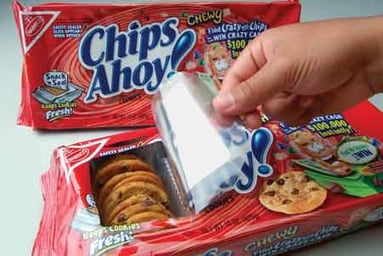 While the safety of the product to the consumer and protecting food as it is transported to the store are major concerns, food manufacturers have made packaging very convenient for consumers.
While the safety of the product to the consumer and protecting food as it is transported to the store are major concerns, food manufacturers have made packaging very convenient for consumers.
More than just providing lids for containers, manufacturers have created ingenious ways for the consumer to reseal and store food products.
For example, packaging material that remains folded after opening (bags of cookies), bags that can be resealed much like Ziplocs (pre-cut vegetables), boil-in bags (rice and vegetables), peel off seals (dried fruit), all-in-one pairings (yogurt pairings with granola) and microwaveable food items are all advances in packaging that have made it more convenient for consumers to store food.
Consumer Information
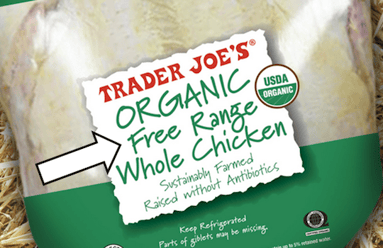 Product description and food labeling are also a consideration when packaging food items.
Product description and food labeling are also a consideration when packaging food items.
Food descriptions pretty much tell the consumer the contents of the packaging, and in many cases, they describe variations in the product.
For example, one would think that chicken is chicken, right?
However, with the various options of chicken available, manufacturers have to be careful in describing chicken as free-range, or even organic, based on Food and Drug Association (FDA) guidelines.
Furthermore, manufacturers have to make consumers aware of the salt, sugar and caloric intake, in addition to other ingredients on the food label.
These food labels detail not only whether the product contains sugar and salt, but the various types of sugars and salt found in food. In addition, the packaging clearly lists every ingredient the food item comprises.
The Process
Packaging a product so that it safely gets to the grocer while making sure that it is well-preserved and edible, in addition to making sure it has the requisite labeling, is a task in and of itself.
Because of this, one can understand why making a package attractive to consumers is a process as well.
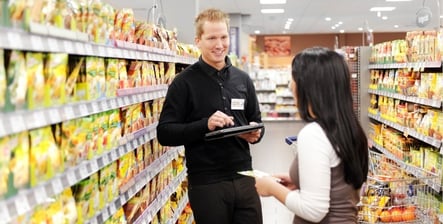 At the same time, advances in technology have made it much easier to tap into consumer tastes.
At the same time, advances in technology have made it much easier to tap into consumer tastes.
Much of what consumers see on the shelves at the grocer is the culmination of market research that targets a particular demographic.
This research serves to tap into the tastes of the consumer, whether it is related to using particular colors, images, and scripts to convey particular ideas to shoppers.
In addition to researching a particular population, developing a strategy for attracting consumers to the product is also important.
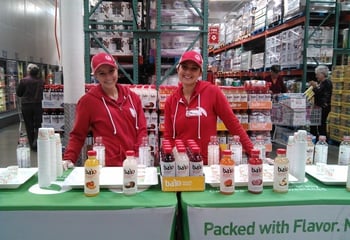 This strategy includes making sure the brand closely aligns with the values of the product and making sure these values are conveyed in the design.
This strategy includes making sure the brand closely aligns with the values of the product and making sure these values are conveyed in the design.
After developing a strategy, designers implement the design, keeping all of the above in mind, and create a package for consumers.
As a part of the implementation, some manufacturers might come up with strategies to introduce the product before it has been formally placed on the supermarket shelves, whether this involves including samples with other products from the same line or whether this includes handing out samples at the grocer.
While a package design is just packaging, these designs make the difference in consumer choice.
For example, think about a favorite product, and then think about the generic version of it. The favorite is often appealing because of pleasing elements that are a part of the design while the generic product has very little design because it is often a lower cost alternative to other products, and appeals to no-nonsense shoppers.
There are a million paths a company can take in creating a design for a package that will sit on the shelves of any grocery store, but the following are tips that can help in creating the perfect design.
Food Packaging Tips For Success
Adopt a Green Attitude
Often times, designs that can be used in other ways are attractive to consumers.
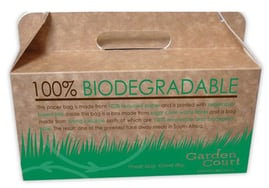
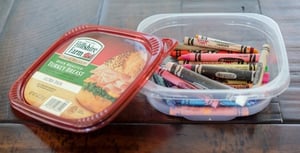
Small jars that can be refashioned as containers that hold liquid items are especially attractive to consumers.
Even better yet, food items that come in tin containers (think about those butter cookies that show up around Christmas) can be used to store non-food items as well.
If consumers feel they can use the package in another way and that it in some way helps the environment in an inexpensive way, they are more likely to be attracted to the product.
Think About Storage
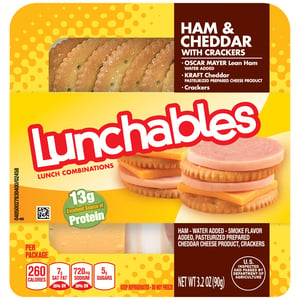 When designing a package, keep easy storage in mind.
When designing a package, keep easy storage in mind.
Bulky packages that sit awkwardly on shelves at home are unattractive to consumers, especially those working with limited space.
Manufactures not only keep this in mind when designing products that are to be stored at home, but food items that are a part of a bag lunch or snack should be packaged for easy storage as well.
Whether packaging the product for individual servings or to be carried on-the-go, these designs appeal to those with active lifestyles or those who are dieting.
Let The Consumer See The Product
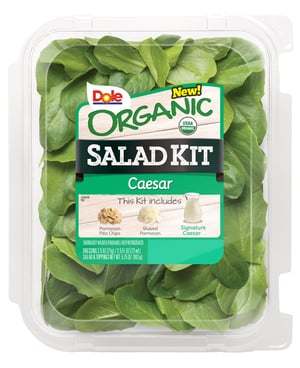 See-through or transparent packaging gives the consumer a glimpse of the product before purchasing.
See-through or transparent packaging gives the consumer a glimpse of the product before purchasing.
This minimalist approach to food design packaging appeals to those who like to get to the bottom line.
They can see the product and then they glean the consumer information from the food label.
The clear packaging also lets them see exactly what color, shape, and texture the food item is before purchase.
Design With Your Branding in Mind
Manufacturers are often conflicted with conveying to consumers ideas that are a part of the brand while making sure this brand is attractive to consumers.
However, branding is so much a part of what connects consumers to a product, so when creating a design these values have to be conveyed to the consumers.
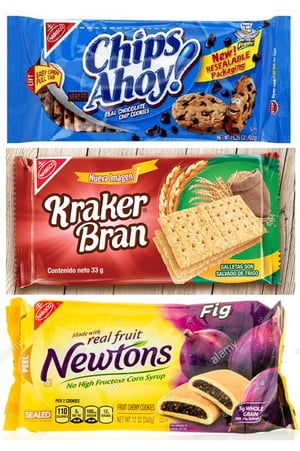
Brand identity is the factor that creates consumer loyalty.
If consumers can easily identify the brand and any association with it, they are more likely to choose not only one product but others in that line also.
For example, if the product is an environmental one, manufacturers might replace aluminum, paperboard, and glass with more eco-friendly materials.
Alternatively, a luxury product (high-end chocolates) might use materials made from the high-quality wrapping, regardless of the effect on the environment.
Factors such as packaging ultimately convey to the public the company’s brand and ideals.
Use Color To Convey Ideas
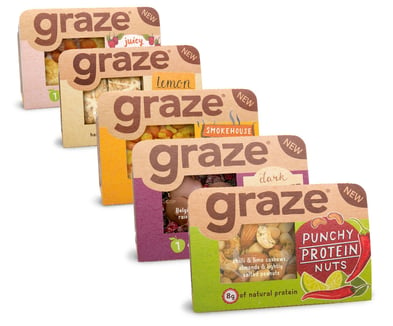 Color is one of the most obvious ways to attract consumer interest.
Color is one of the most obvious ways to attract consumer interest.
The product’s colors have to complement the consumer’s perceived notions of the brand. Make sure that the colors used to advertise the product to the public are appropriate.
For example, packaging nutrition bars in colors that are bright and distracting might not appeal to consumers, especially granola or other protein bars.
Instead, these products are often packaged in neutral colors like brown, beige, green or even clear packaging
Conversely, colors used in food packaging for Kool Aide and other powdered drinks are often bright ones from the ultraviolet spectrum.
Design With Function at the Fore
Many condiment manufacturers have converted traditional glass and plastic containers to the squeeze bottle.
Previously, scooping mayonnaise from the jar could be messy, especially when the container was almost empty.
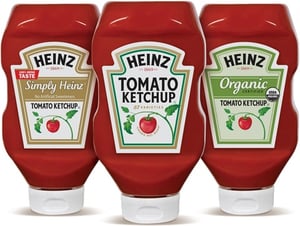 However, squeezable versions of this condiment have made manipulating the bottle easier and without making a mess.
However, squeezable versions of this condiment have made manipulating the bottle easier and without making a mess.
Like mayonnaise, sour cream also has a squeezable version, which removes the extra water that collects in the plastic container after the product is opened.
In addition to mayo and sour cream, some versions of salad dressing are in squeezable bottles. Manufacturers have even made a squeezable relish that slides on top of a hot dog evenly.
Go With Limited Editions
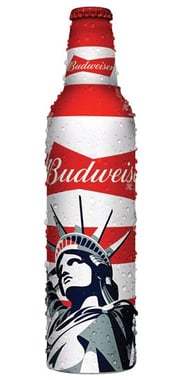
.jpg?width=231&name=DD%20pumpkin%20-%20image%20(1).jpg)
Like with many other products, limited editions are a one-time opportunity for consumers to experience a variation on a product.
Food is no different either. For instance, soft drinks that come in flavors that are not a part of the usual menu of items are often favorites of consumers.
Go to any of the major coffee house chains during the holidays and there is always some variation of the usual cup of Joe, whether consumers are treated to pumpkin spiced or mint chocolate lattes.
During the summer months, these same chains will advertise blueberry pomegranate or pina colada smoothies to attract consumers during the hot weather.
Limited editions are attractive just because they are around until the next season or so.
Keep The Design Current
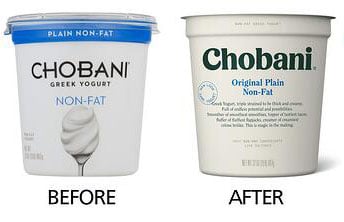 Whether it means adopting a simple design or using a particular script, manufacturers should pay attention to design trends because it keeps the product current.
Whether it means adopting a simple design or using a particular script, manufacturers should pay attention to design trends because it keeps the product current.
Designs that no longer appeal to consumers because of changing interests can prevent products from being competitive with newer brands.
By adopting new designs every so often, the product avoids appearing dated.
Go Against The Grain
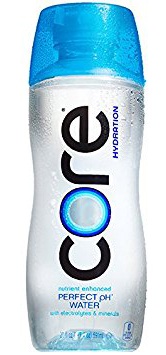
For some consumers, packaging a product in materials that are different than the standard for the food item makes it stand out.
For example, traditionally canned meat is packaged in a tin container that is either opened with a can opener or some device attached to the can.
Today, however, many consumers might find tuna, chicken and other canned meats contained in plastic containers.
Bottled water is another great instance where alternative packaging has made the difference in public reception.
As opposed to using the standard individual handheld bottle, consumers might see water contained in bottles that are elongated and made to appear sleeker or some containers that are square.
These unconventional designs can do a number of things for the product, but more significantly, they make these products stand out from the rest of the pack.
Product Design That Translates Into Bottom Line
Creating a package that safely reaches its destination and complies with government regulations is easy.
However, creating one that does all of the above and is attractive to consumers can be a little bit trickier.
Ultimately, as many do judge a book by its cover, consumers also judge products by their packaging.
Design and the packaging that accompanies the product influence consumer tastes, and more significantly, their purchases.
A well-designed package design is the culmination of the research efforts and strategies that go along with creating the product, and all of these translate into the company’s bottom line.
Related Articles:
Tips for Packaging Expensive Products
How much will my packaging cost?
Tips To Get Your Product Into The Big-Name Stores


